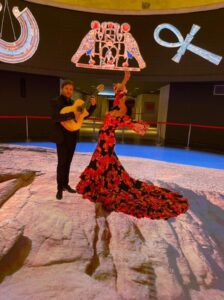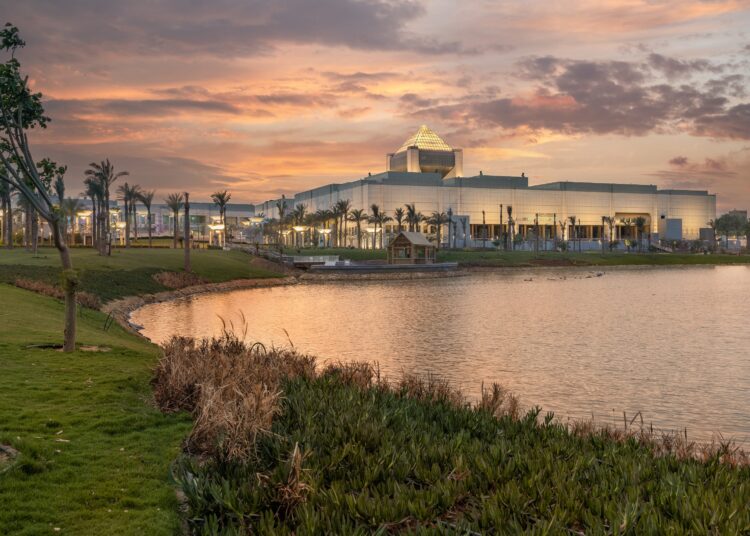Among the many arts and artefacts showcased by the National Museum of Egyptian Civilisation (NMEC) in Old Cairo’s Fustat is the art of the unexpected.
Spanish flamenco dancing is an unlikely candidate for the bucket list in connection with museum visits.
With the help of the Spanish Embassy in Cairo, choreographer Anabel Veloso and her troupe put on a dance to the music of Dalida’s Helwa Ya Baladi.

Before you wonder what the connection is between what is thought of as a typical southern Spanish dance and ancient Egypt, there isn’t one, except that flamenco probably originated in India, which is east-ish, before the 15th century. The term ‘flamenco’ is said to derive from the Arabic fellah mengus which means ‘wandering peasant’. Far-fetched, perhaps, but this is the kind of information locals and tourists alike lap up.
For the more sporty onlookers, the museum was the venue for the 2022 Professional Squash Association (PSA) World Championship, under the auspices of the Ministries of Tourism and Antiquities, and Youth and Sports.
If you want to amaze your friends with your writing skills in ancient Egyptian, you can attend classes, which start in September, the museum will give instruction in hieroglyphics.
You might wonder about what happened to archaeologist and television personality Dr Zahi Hawass since the tumultuous days of revolutions. Perhaps minus his trademark panama hat, he delivers seminars with breathless enthusiasm on a host of topics at NMEC.
The museum holds workshops on recycling, handicrafts and cartoon art as a vehicle for ancient Egyptian mythology.
The museum lays on courses in making ornaments in traditional Sinai designs, inspired by drawing and decoration from the peninsula.
Needle-and-thread practitioners can learn more about embroidery, which has its origins in ancient Egypt. You can learn to use floral and plant motifs of the ancients, and accessorise them with jewellery similar to that worn by our ancestors thousands of years ago.
Most museums plonk artefacts from one age in one gallery. You walk into the next one and you step into another period. This is fine for school visits when the class has been looking at the Old Kingdom this month.

Managing Executive Director of NMEC Ahmed Farouk Ghoneim told the Egyptian Mail that what strikes visitors is the unorthodox display.
“One can see artefacts of different ages together in one place, in one hall without any division between periods because the civilisations are mixed together,” Ghoneim said.
The museum consists of three halls; the main one displaying 1,200 artefacts from the Pharaonic period to the modern age.
The 22 royal mummies dating back to the 17th-20th dynasties, which were transferred from the Egyptian Museum in a grand parade watched by millions worldwide, have their last resting places here.
A third hall takes the visitors through the history of Egyptian textiles.
“We are working in the fourth hall which will be dedicated to the history of the Egyptian capital,” Ghoneim said.
Indeed, it is odd that no single facility is devoted to the history of Africa’s largest city and one of the world’s oldest. One can imagine black-and-white sepia-tinted photographs of familiar streets in the days of our grandparents and before.
All the above distinguishes NMEC from the Egyptian Museum, the grandfather of all museums of Cairo. The latter, founded in 1902, still takes itself seriously in a Victorian fashion.






Discussion about this post